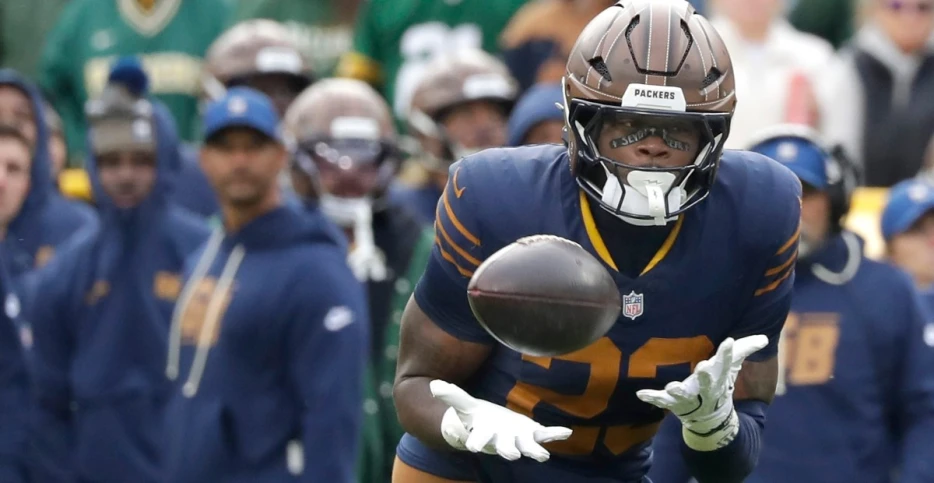
 Acme Packing Company
Acme Packing Company
I am especially sick of bubble screens, but regular screens aren’t always the best, either! Such was the case early in the fourth quarter on Sunday when the Green Bay Packers faced third and three from the Carolina Panthers’ eight-yard line, threatening to score and tie the game at 13.
The Packers love screens of all kinds, but they’re not great at them, and when they do work, they tend to involve tight end Tucker Kraft, who was out of the game at this point. It also helps if the opposing defense is poor at tackling, or poor at defending pass-catching running backs, and that’s not the case with the Panthers. Carolina has a lot of flaws, but they entered the game third in defending pass-catching backs and actually got slightly worse (they are now fourth) due to Chris Brooks’ efforts in this game.
Josh Jacobs and Emanuel Wilson combined for five receptions on seven targets, for a total of 14 yards. It is worth noting that on the Packers’ very first offensive play of the game, Josh Jacobs gained seven of those 14 receiving yards, and so after that play the duo gained seven yards on six targets. Furthermore, the play in question, while looking very much like a screen pass, was technically a run, as Love threw the ball backwards to Wilson, and so does not count in the stats above. The play lost five yards and so you can mentally knock five yards off of that running back reception total.
And so the screen was already a questionable call from a personnel standpoint (no Kraft, by the way, the Panthers entered the game ranked dead last in defending tight ends), and a matchup perspective (Carolina is good at stopping this specific thing), but it was also bad from a pure strategic perspective.
Ideally, on third and three from the eight-yard line, you would like a play that, at worst, gives you a good chance of getting the three yards, and preferably with a throw to the end zone as an option too. The problem with a screen here is that you’re putting the ball in the hands of your receiver five yards behind the line of scrimmage, with no forward momentum, and relying on him to get at least eight yards. That means no missed blocks, no drops, etc., and that’s a lot of moving parts for a measly three yards. A basic running play is often able to generate three yards, even if a few players miss their assignments, and even if the back doesn’t gain three yards, they are likely to make a fourth-down attempt easier, and unlikely to lose major yardage. Josh Jacobs gained three yards or scored a touchdown on 12 of his 17 rushing attempts in this game. You might gain a ton of yards on a screen, but there’s a higher-than-normal chance that things get blown up.
It’s also worth noting that, while a screen may seem like a somewhat safe...